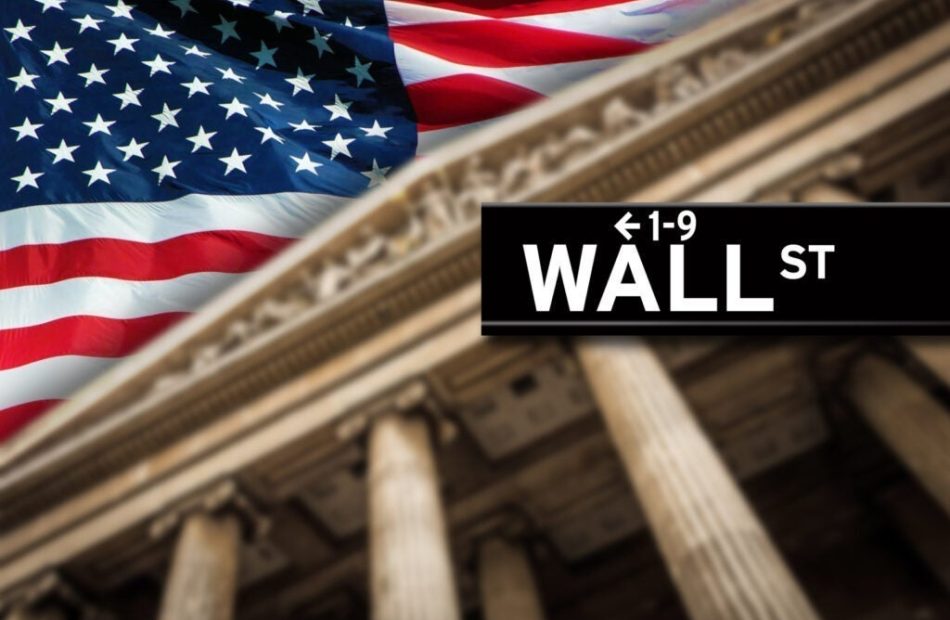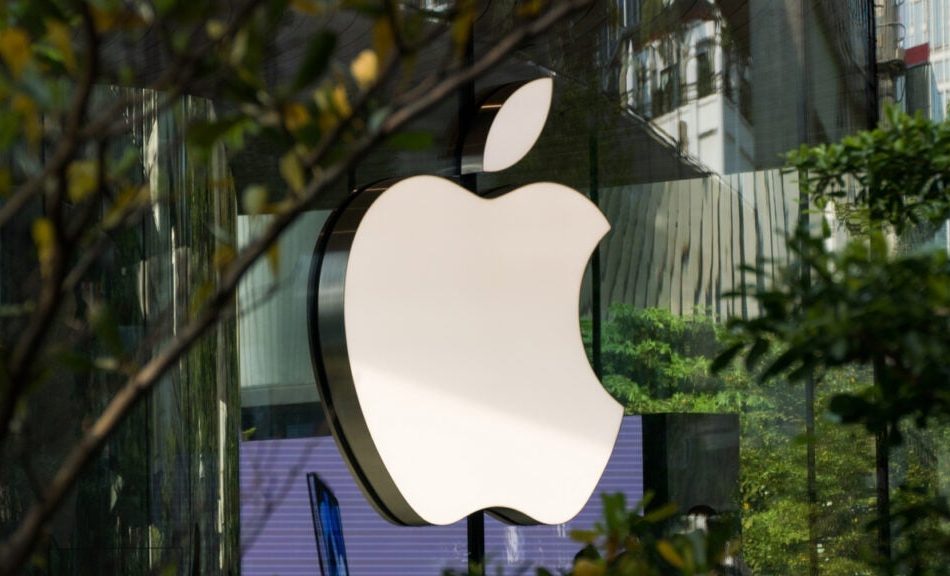WILDBRAIN REPORTS FULL YEAR AND Q4 2024 RESULTS
Fiscal 2024 Highlights
- Revenue was $461.8 million, compared to $532.9 million in FY2023.
- Net loss was $106.0 million, compared with net loss of $45.6 million in FY2023.
- Adjusted EBITDA1 was $87.6 million, compared to $97.9 million in FY2023.
- Cash provided by operating activities was $73.6 million, compared to cash provided by operating activities of $94.2 million in FY2023.
- Free Cash Flow1 was negative $29.5 million, compared to positive $29.8 million in FY2023.
Q4 2024 Highlights
- Revenue was $130.0 million, compared to $124.9 million in Q4 2023.
- Net loss was $80.7 million, compared with net loss of $44.4 million in Q4 2023.
- Adjusted EBITDA1 was $23.9 million, compared to $19.1 million in Q4 2023.
- Cash provided by operating activities was $18.3 million, compared to cash provided by operating activities of $30.4 million in Q4 2023.
- Free Cash Flow1 was negative $6.6 million, compared to positive $16.9 million in Q4 2023.
TORONTO, Sept. 17, 2024 /PRNewswire/ – WildBrain Ltd. (“WildBrain” or the “Company”) WILD, a global leader in kids’ and family entertainment, today reported its fourth quarter (“Q4 2024”) results for the period ended June 30, 2024.
Josh Scherba, WildBrain President and CEO, said: “In Fiscal Year 2024, we undertook a realignment of our global organization to focus on building key franchises across our core competencies of Content Creation, Audience Engagement and Global Licensing. Driven by our 360-degree franchise strategy and led by an experienced senior management team, we have begun to see benefits in accelerating growth for key owned franchises and partner brands. The build in our licensing business this year was offset by the industry-wide slowdown in the content greenlights due to the Hollywood strikes, but our production pipeline has been ramping up and we are seeing a return to normal levels for Fiscal 2025 and 2026. We are confident that the combination of our assets, our strategy and capabilities in the kids and family entertainment space, amounts to a unique and highly valuable foundation to deliver growth over the long term.”
Nick Gawne, WildBrain CFO, added: “We are pleased to have announced in July a comprehensive plan to refinance our debt and repay our convertible debentures. The successful completion of the refinancing process during a challenging period for the wider industry demonstrates the robustness of our model and strategic vision. With the extended maturity, we can continue to execute on this strategic vision and drive earnings and free cash flow growth. We will continue to focus on disciplined financial management, improving our balance sheet and reducing leverage over time.”
Q4 2024 Performance – Executing on Priorities
|
PRIORITIES |
HIGHLIGHTS |
|
Focus on Key Brands & Partnerships |
|
|
Deliver Sustainable Growth |
|
|
Improve Balance Sheet |
|
Q4 2024 Financial Highlights
|
Financial Highlights (in millions of Cdn$) |
Year Ended June 30, |
Three Months Ended June 30, |
||
|
2024 |
2023 |
2024 |
2023 |
|
|
Revenue |
$461.8 |
$532.9 |
$130.0 |
$124.9 |
|
Gross Margin1 |
$221.1 |
$241.5 |
$59.5 |
$57.5 |
|
Gross Margin (%)1 |
48 % |
45 % |
46 % |
46 % |
|
Adjusted EBITDA attributable to WildBrain1 |
$87.6 |
$97.9 |
$23.9 |
$19.1 |
|
Net Income (Loss) attributable to WildBrain |
$(106.0) |
$(45.6) |
$(80.7) |
$(44.4) |
|
Basic Earnings (Loss) per Share |
$(0.51) |
$(0.26) |
$(0.39) |
$(0.24) |
|
Cash Provided by Operating Activities |
$73.6 |
$94.2 |
$18.3 |
$30.4 |
|
Free Cash Flow1 |
$(29.5) |
$29.8 |
$(6.6) |
$16.9 |
In Q4 2024, revenue increased 4% to $130.0 million, compared to $124.9 million in Q4 2023. Fiscal Year 2024 revenue was $461.8 million, compared to revenue of $532.9 million in Fiscal Year 2023.
Content Creation and Audience Engagement revenue increased 7% to $68.0 million in Q4 2024, compared to $63.6 million in Q4 2023. Strong distribution revenue in the current quarter as well as continued strength in the YouTube and AVOD networks drove quarter-on-quarter growth but was offset by lower production revenues as a result of fewer productions in the studios. Fiscal Year revenue for the segment was $212.8 million, compared to revenue of $280.6 million in Fiscal Year 2023.
Global Licensing revenue increased 4% to $53.7 million in Q4 2024, compared to $51.8 million in Q4 2023. Revenue in the quarter was driven by growth in Peanuts and WildBrain brands, as well as growth in Asia Pacific for WildBrain CPLG. Global Licensing revenue in Fiscal Year 2024 was $213.6 million, reflecting 1% growth over Fiscal Year 2023.
Legacy WildBrain Spark revenue in Q4 2024 was $6.9 million compared to $10.3 million in Q4 2023. Kids continue to be highly engaged on our YouTube network, with over 64 billion minutes of videos watched in the quarter and strong engagement in the average duration of viewing. The YouTube network saw revenue growth in the quarter which was offset by the production headwinds seen in the broader content industry. Legacy WildBrain Spark had revenue of $45.2 million, compared to $47.1 million in Fiscal Year 2023.
Gross margin1 for Q4 2024 was 46%, consistent with gross margin of 46% in Q4 2023. Gross margin for Q4 2024 was $59.5 million, an increase of $2.0 million, compared to $57.5 million for Q4 2023. Fiscal Year 2024 consolidated gross margin was $221.1 million, a decrease of $20.4 million, compared to $241.5 million in Fiscal Year 2023.
Cash provided by operating activities in Q4 2024 was $18.3 million, compared to $30.4 million provided by operating activities in Q4 2023. Fiscal Year 2024 cash provided by operating activities was $73.6 million, compared to $94.2 million in Fiscal Year 2023. Free Cash Flow1 was negative $6.6 million in Q4 2024, compared with Free Cash Flow of positive $16.9 million in Q4 2023. Fiscal Year 2024 Free Cash Flow was negative $29.5 million, compared to positive $29.8 million in Fiscal Year 2023.
Adjusted EBITDA1 was up 25% to $23.9 million in Q4 2024, compared with $19.1 million in Q4 2023. The increase in the quarter was driven by higher gross margin dollars and a reduction in SG&A. Adjusted EBITDA in Fiscal Year 2024 was $87.6 million, compared to $97.9 million in Fiscal Year 2023.
Q4 2024 net loss was $80.7 million compared to net loss of $44.4 million in Q4 2023. The change was primarily driven by a non-cash impairment charge of intangible assets in relation to our Television Business segment and investments in film and television and acquired and library content, offset by higher income tax recovery, higher gross margin dollars, lower SG&A, and a change in fair value of embedded derivatives in the current quarter. Fiscal Year 2024 net loss was $106.0 million, compared to net loss of $45.6 million in Fiscal Year 2023.
|
1. Adjusted EBITDA, Adjusted EBITDA attributable to WildBrain, Gross Margin and Free Cash Flow are non-GAAP financial measures – see below for further details. |
Q4 2024 Conference Call
The Company will hold a conference call on September 18, 2024 at 10:00 a.m. ET to discuss the results.
To immediately join the call by phone on that date without operator assistance, please use the following URL to receive an automated instant call back connecting you into the conference:
https://link.meetingpanel.com/?id=93436
Alternatively, you may dial direct to be entered into the call by an operator, referencing conference ID 93436 at +1 (888) 510-2154 in North America or +1 (437) 900-0527 internationally.
If dialing in, please allow 10 minutes to be connected to the conference call.
Replay will be available after the call on +1 (888) 660-6345 or +1 (289) 819-1450, under passcode 93436#, until September 25, 2024.
The audio and transcript will also be archived on our website approximately three business days following the event.
For more information, please contact:
Investor Relations: Kathleen Persaud – VP, Investor Relations, WildBrain
kathleen.persaud@wildbrain.com
+1 212-405-6089
Media: Shaun Smith – Sr. Director, Global Communications & Public Relations, WildBrain
shaun.smith@wildbrain.com
+1 416-977-7230
About WildBrain
At WildBrain we inspire imaginations through the wonder of storytelling. As a leader in 360° franchise management, we are experts in content creation, audience engagement and global licensing, cultivating and growing love for our own and partner brands with kids and families around the world. With approximately 14,000 half-hours of filmed entertainment in our library—one of the world’s most extensive—we are home to such treasured franchises as Peanuts, Teletubbies, Strawberry Shortcake, Yo Gabba Gabba!, Caillou, Inspector Gadget and Degrassi. WildBrain’s mission is to create exceptional entertainment experiences that captivate and delight fans both young and young at heart.
Our studios produce such award-winning series as The Snoopy Show; Snoopy in Space; Strawberry Shortcake: Berry in the Big City; Sonic Prime; Chip and Potato; Teletubbies Let’s Go! and many more. Enjoyed in more than 150 countries on over 500 platforms, our content is everywhere kids and families view entertainment, including YouTube, where our network has garnered over 1.5 trillion minutes of watch time. Our television group owns and operates some of Canada’s most-viewed family entertainment channels. WildBrain CPLG, our leading consumer-products and location-based entertainment agency, represents our owned and partner properties in every major territory worldwide.
WildBrain is headquartered in Canada with offices worldwide and trades on the Toronto Stock Exchange WILD. Visit us at wildbrain.com. Visit us at wildbrain.com.
Forward-Looking Statements
This press release may contain forward-looking information within the meaning of applicable securities legislation, which reflects WildBrain’s current assumptions and expectations regarding future events as at the time they are made. The words “will”, “expects”, “anticipates”, “believes”, “plans”, “intends” and similar expressions are often intended to identify forward-looking information, although not all forward-looking information contains these identifying words. Although the Company believes that the assumptions and factors used in preparing, and the expectations contained in, the forward-looking information and statements are reasonable, undue reliance should not be placed on such information and statements, and no assurance or guarantee can be given that such forward-looking information and statements will prove to be accurate, as actual results and future events could differ materially from those anticipated in such information and statements. Forward-looking information is based on a number of assumptions and is subject to a number of risks and uncertainties, many of which are beyond WildBrain’s control, which could cause actual results and events to differ materially from those that are disclosed in or implied by such forward-looking information. Such risks and uncertainties include but are not limited to: changes in general economic, business and political conditions. WildBrain undertakes no obligation to update such forward-looking information, whether as a result of new information, future events or otherwise, except as expressly required by applicable law.
Non-IFRS Measures
In addition to the results reported in accordance with IFRS as issued by the International Accounting Standards Board, the Company uses various non-GAAP financial measures, which are not recognized under IFRS, as supplemental indicators of our operating performance and financial position. These non-GAAP financial measures are provided to enhance the user’s understanding of our historical and current financial performance and our prospects for the future. Management believes that these measures provide useful information in that they exclude amounts that are not indicative of our core operating results and ongoing operations and provide a consistent basis for comparison between periods. The following discussion explains the Company’s use of certain non-GAAP financial measures, which are Adjusted EBITDA, Adjusted EBITDA attributable to the Shareholders of the Company, Gross Margin and Free Cash Flow.
Investors are cautioned that these non-GAAP financial measures should not be construed as an alternative measure to net income or loss, or other measures as determined in accordance with GAAP, or as an indicator of the Company’s financial performance or a measure of liquidity and cash flows.
“Adjusted EBITDA” means earnings (loss) before net finance costs, income taxes, amortization of property & equipment and right-of-use and intangible assets, amortization of acquired and library content, equity-settled share-based compensation expense, changes in fair value of embedded derivatives, gain/loss on foreign exchange, reorganization, development and other expenses, impairment of certain investments in film and television programs/acquired and library content/P&E/intangible assets/goodwill, and also includes adjustments for other identified charges, as specified in the accompanying tables. Adjusted EBITDA is not an earnings measure recognized by GAAP and does not have a standardized meaning prescribed by GAAP; accordingly, Adjusted EBITDA may not be comparable to similar measures presented by other issuers. Management believes that certain lenders, investors and analysts use Adjusted EBITDA to measure a company’s ability to service debt and meet other payment obligations, and as a common valuation measurement in the media and entertainment industry. Further, certain of our debt covenants use Adjusted EBITDA in the calculation. The most comparable GAAP measure is earnings before income taxes.
“Adjusted EBITDA attributable to the Shareholders of the Company” means Adjusted EBITDA excluding the portion of Adjusted EBITDA attributable to non-controlling interests.
“Gross Margin” means revenue less direct production costs and expense of film and television produced. Gross Margin is not an earnings measure recognized by GAAP and does not have a standardized meaning prescribed by GAAP; accordingly, Gross Margin may not be comparable to similar measures presented by other issuers. Management believes Gross Margin is a useful measure of profitability before considering operating and other expenses and can be used to assess the Company’s ability to generate positive net earnings and cash flows. The most comparable GAAP measure is gross profit.
“Free Cash Flow” means operating cash flow less distributions to non-controlling interests, changes in interim production financing, cash interest paid on our long-term debt, bank indebtedness, and lease liabilities, and principal repayments on our lease liabilities. Free Cash Flow does not have a standardized meaning prescribed by GAAP; accordingly, Free Cash Flow may not be comparable to similar measures presented by other issuers. Management believes Free Cash Flow is a useful measure of the Company’s ability to repay debt, finance strategic business acquisitions and investments, pay dividends, and repurchase shares. The most comparable GAAP measure is cash from operating activities.
![]() View original content to download multimedia:https://www.prnewswire.com/news-releases/wildbrain-reports-full-year-and-q4-2024-results-302251104.html
View original content to download multimedia:https://www.prnewswire.com/news-releases/wildbrain-reports-full-year-and-q4-2024-results-302251104.html
SOURCE WildBrain Ltd.
© 2024 Benzinga.com. Benzinga does not provide investment advice. All rights reserved.
50 Or 25 Bps Fed Rate Cut? Markets And Economists At Odds — What Does Steeper Reduction Mean For Investors?
The most important Federal Reserve decision day is upon us and market participants wait with bated breath regarding what Chairman Jerome Powell and his rate-setting committee team would deliver. Betting market odds suggest a steeper cut is more likely than a shallow one most economists have been factoring in.
The Odds: The September Federal Open Market Committee meeting kicked off on Tuesday and the central bank will announce its rate decision via a post-meeting policy statement at 2 p.m. EDT. The apex bank will also release its latest “Summary of Economic Projections,” which consists of the dot-plot chart, plotted based on Fed officials’ expectations of near- and medium-term interest rates.
The chances of a 50 basis-point cut at the September meeting is 55% and that of a more modest 25 bps cut is 45%, according to data available on blockchain-powered prediction market Polymarket. The odds of another pause or a 25 bps hike are 1% and less than 1%, respectively.
Meanwhile, the futures market has priced in a steeper 63% chance of a 50 bps reduction and a 37% probability of a 25 bps cut.
But economists are less sanguine about a steeper cut. Wolters Kluwer, a provider of professional information and software, published its September issue of Blue Chip Economic Indicators in which it said 86% of the economists surveyed foresaw a 25 bps cut and also cuts of similar magnitude at each of the remaining three meetings of the year.
The results of the latest CNBC Fed survey suggested a 96% probability of a Fed rate cut in September, with 84% of the respondents going with a 25 bps cut. The respondents see the Fed funds rate at 3.7% at the end of 2025 while mentioning 3.3% as a neutral rate. The neutral rate is the rate at which the monetary policy is neither expansionary nor contractionary – one at which the economy operates with full employment and stable inflation.
The 27 respondents to the survey included investment strategists, economists and fund managers, CNBC said.
See Also: Best Value Stocks
Why It’s Important: A bigger cut will send the message to the market that the economy is in trouble, according to Nomura Managing Director, Cross-Asset Macro Strategy, Charlie McElligott. Financial Times reported. “When I hear people say ‘Well, 50 bps is telling the market that the Fed thinks we have a big problem and could lead to a risk-off tantrum,’ my thought is that NOTHING in this steroidal, Frankenstein — cycle has been normal,” he reportedly said.
Drawing cues from history, Nomura said the S&P 500 has been down 1% on average leading up to the previous 50 bps cuts. The best-performing sectors during this period are consumer staples and the worst performer is the tech sector. Energy, industrials, precious metals and small-cap Russell 2,000 stocks also don’t do well, Nomura’s analysis showed.
Three months after the cut, the S&P 500 doesn’t budge, with 2007, 2001 and 1974 being exceptions when it sold off hard, the firm said, adding that value outperforms growth during the period, the dollar rises, metals surge and the yield curve steepens. The firm recommended buying small-caps, which rise an average of 5.6%.
The SPDR S&P 500 ETF Trust SPY, which tracks the S&P 500 Index, ended Tuesday’s session up 0.04% at $563.07, according to Benzinga Pro data. The exchange-traded fund has gained 19.2% so far this year.
Read Next:
Image Via Shutterstock
Market News and Data brought to you by Benzinga APIs
© 2024 Benzinga.com. Benzinga does not provide investment advice. All rights reserved.
Buy These 3 Stocks Yielding Up To 6.6% For Income And Dividend Growth Right Now – Surprisingly Not On Many's Radar
Benzinga and Yahoo Finance LLC may earn commission or revenue on some items through the links below.
Real estate investment trusts (REITs) offer a compelling opportunity for income-seeking investors, but they are often overlooked. REITs own, operate, or finance income-generating real estate, allowing individuals to invest in various real estate types without direct ownership or management responsibilities.
REITs must distribute a large percentage of their taxable income to shareholders through dividends, often resulting in high yields. If you’re an income-seeking investor, here are three high-quality REITs with track records of dividend growth you could invest in today.
Don’t Miss:
CubeSmart
CubeSmart (NYSE:CUBE) is the third-largest owner and operator of self-storage properties in the United States. As of June 30, its portfolio comprised 1,494 self-storage properties in 185 markets across 40 states and the District of Columbia.
CubeSmart currently pays a quarterly dividend of $0.51 per share, which equates to an annualized dividend of $2.04 per share, giving it a yield of about 3.8%.
In addition to sporting a high yield, CubeSmart has an extensive track record of dividend growth. It has raised its annual dividend payment for 14 consecutive years, with a 62% dividend growth rate over the last five years.
EastGroup Properties, Inc.
EastGroup Properties (NYSE:EGP) is a leading owner and manager of industrial properties in the United States. As of June 30, its portfolio comprised approximately 60.2 million square feet of premier distribution facilities across major Sunbelt markets in 12 states.
EastGroup currently pays a quarterly dividend of $1.40 per share, equating to an annualized dividend of $5.60 per share, giving it a yield of about 3% at the time of this writing.
EastGroup’s latest dividend increase was 10% last month. In the news release, the company noted that it has paid dividends for 32 consecutive years, with 29 increases and no reductions, including increases in each of the last 13 years.
Trending Now:
Universal Health Realty Income Trust
Universal Health Realty Income Trust (NYSE:UHT) owns and manages a portfolio of health care and human service-related facilities in the U.S. As of Aug. 1, its portfolio comprised 26 real estate investments or commitments located across 21 states, including acute care hospitals, behavioral health care facilities, rehabilitation hospitals, subacute care facilities, surgery centers, child care centers and medical office buildings.
UHT currently pays a quarterly dividend of $0.73 per share, equating to an annualized dividend of $2.92 per share, giving it a yield of about 6.4% at the time of this writing.
In addition to having the highest REIT yield discussed here, UHT has the longest dividend increase streak. It has raised its annual dividend payment for 37 consecutive years, with a 0.7% hike in June setting it on track for 2024 to mark the 38th consecutive year with an increase.
Better Yields Than Some REITs?
The current high-interest-rate environment has created an incredible opportunity for income-seeking investors to earn massive yields, but not through publicly-traded REITs.
Arrived Homes, the Jeff Bezos-backed investment platform has launched its Private Credit Fund, which provides access to a pool of short-term loans backed by residential real estate with a target 7% to 9% net annual yield paid to investors monthly. It paid 8.1% in July. The best part? Unlike other private credit funds, this one has a minimum investment of only $100.
Looking for fractional real estate investment opportunities? The Benzinga Real Estate Screener features the latest offerings.
This article Buy These 3 Stocks Yielding Up To 6.6% For Income And Dividend Growth Right Now – Surprisingly Not On Many’s Radar originally appeared on Benzinga.com
Intuitive Machines, Netflix, Li Auto, Trump Media & Technology, Tesla: Why These 5 Stocks Are On Investors' Radars Today
The U.S. stock market had a mixed close on Tuesday. The Dow Jones slipped slightly by 0.4%, finishing at 41,606.18. Meanwhile, the S&P 500 edged up 0.03% to 5,634.58, and the Nasdaq gained 0.2%, closing at 17,628.06.
Investors are now keenly awaiting the Federal Reserve’s meeting scheduled for Wednesday, where a cut in interest rates is widely expected.
These are the top stocks that gained the attention of retail traders and investors throughout the day:
Intuitive Machines, Inc. LUNR
Intuitive Machines’ stock plummeted by 5.59%, closing at $5.40 after hitting an intraday high and low of $5.87 and $5.34 respectively. The company’s shares surged 55.6% to $8.40 in extended trading after it secured a NASA contract for communication and navigation services in the near space region.
Netflix Inc. NFLX
Netflix’s stock rose by 1.49% to close at $706.91. The streaming giant’s shares reached an intraday high of $707.63 and a low of $698.37. Co-CEO Ted Sarandos stated that there’s no such thing as too much content in the ever-changing streaming sector.
Li Auto Inc. LI
Li Auto’s stock soared by 12.28% to close at $21.39. The Chinese electric vehicle manufacturer’s shares hit an intraday high and low of $21.4 and $20.21 respectively. The company’s stock traded higher following a report indicating that the People’s Bank of China plans to cut the bank reserve requirement ratio.
Trump Media & Technology Group Corp DJT
Trump Media & Technology Group stock fell by 6.60% to close at $16.14. The company’s shares hit an intraday high of $17.09 and a low of $16.10. Former President Donald Trump launched a new decentralized finance platform centered around a crypto token.
Tesla Inc. TSLA
Tesla’s stock increased by 0.48% to close at $227.87. The electric vehicle maker’s shares reached an intraday high of $234.57 and a low of $226.55. Tesla switched to ‘Full Self-Driving Supervised’ for new cars, sparking a flurry of conspiracy theories.
Photo by WHYFRAME on Shutterstock
Prepare for the day’s trading with top premarket movers and news by Benzinga.
Read Next:
This story was generated using Benzinga Neuro and edited by Shivdeep Dhaliwal
Market News and Data brought to you by Benzinga APIs
© 2024 Benzinga.com. Benzinga does not provide investment advice. All rights reserved.
Cousins Properties Announces Its Third Quarter 2024 Common Stock Dividend
ATLANTA, Sept. 17, 2024 /PRNewswire/ — Cousins Properties CUZ announced today that its Board of Directors has declared a cash dividend of $0.32 per common share for the third quarter of 2024. The third quarter dividend will be payable on October 15, 2024 to common shareholders of record on October 3, 2024.
About Cousins Properties
Cousins Properties is a fully integrated, self-administered and self-managed real estate investment trust (REIT). The Company, based in Atlanta, GA and acting through its operating partnership, Cousins Properties LP, primarily invests in Class A office buildings located in high growth Sun Belt markets. Founded in 1958, Cousins creates shareholder value through its extensive expertise in the development, acquisition, leasing, and management of high-quality real estate assets. The Company has a comprehensive strategy in place based on a simple platform, trophy assets, and opportunistic investments. For more information, please visit www.cousins.com.
This press release does not constitute an offer of any securities for sale. Certain matters discussed in this press release are forward-looking statements within the meaning of the federal securities laws and are subject to uncertainties and risk and actual results may differ materially from projections. Readers should carefully review Cousins’ financial statements and notes thereto, as well as the risk factors described in Part I, Item 1A of the Company’s Annual Report on Form 10-K for the year ended December 31, 2023, and other documents Cousins files from time to time with the Securities and Exchange Commission. Such forward-looking statements are based on current expectations and speak as of the date of such statements. Cousins undertakes no obligation to publicly update or revise any forward-looking statement, whether as a result of future events, new information or otherwise.
CONTACT:
Roni Imbeaux
Vice President, Finance and Investor Relations
404-407-1104
rimbeaux@cousins.com
![]() View original content:https://www.prnewswire.com/news-releases/cousins-properties-announces-its-third-quarter-2024-common-stock-dividend-302250915.html
View original content:https://www.prnewswire.com/news-releases/cousins-properties-announces-its-third-quarter-2024-common-stock-dividend-302250915.html
SOURCE Cousins Properties
Market News and Data brought to you by Benzinga APIs
© 2024 Benzinga.com. Benzinga does not provide investment advice. All rights reserved.
Insider Transaction: Jay A Pack Sells $1.17M Worth Of Mission Produce Shares
Making a noteworthy insider sell on September 16, Jay A Pack, Director at Mission Produce AVO, is reported in the latest SEC filing.
What Happened: A Form 4 filing from the U.S. Securities and Exchange Commission on Monday showed that Pack sold 89,266 shares of Mission Produce. The total transaction amounted to $1,165,720.
The latest market snapshot at Tuesday morning reveals Mission Produce shares up by 1.54%, trading at $13.19.
Unveiling the Story Behind Mission Produce
Mission Produce Inc is engaged in the business of producing and distributing avocados, serving retail, wholesale, and food service customers. Also, the company provides additional services like ripening, bagging, custom packing, and logistical management. The company’s operating segments include Marketing and Distribution and International Farming and Blueberries. It generates maximum revenue from the Marketing and Distribution segment. The Marketing and Distribution segment sources fruit mainly from growers and then distributes fruit through a distribution network.
Breaking Down Mission Produce’s Financial Performance
Positive Revenue Trend: Examining Mission Produce’s financials over 3 months reveals a positive narrative. The company achieved a noteworthy revenue growth rate of 23.95% as of 31 July, 2024, showcasing a substantial increase in top-line earnings. When compared to others in the Consumer Staples sector, the company excelled with a growth rate higher than the average among peers.
Interpreting Earnings Metrics:
-
Gross Margin: The company shows a low gross margin of 11.42%, suggesting potential challenges in cost control and profitability compared to its peers.
-
Earnings per Share (EPS): With an EPS below industry norms, Mission Produce exhibits below-average bottom-line performance with a current EPS of 0.17.
Debt Management: Mission Produce’s debt-to-equity ratio is below the industry average. With a ratio of 0.45, the company relies less on debt financing, maintaining a healthier balance between debt and equity, which can be viewed positively by investors.
Market Valuation:
-
Price to Earnings (P/E) Ratio: The current P/E ratio of 39.36 is below industry norms, indicating potential undervaluation and presenting an investment opportunity.
-
Price to Sales (P/S) Ratio: The Price to Sales ratio is 0.81, which is lower than the industry average. This suggests a possible undervaluation based on sales performance.
-
EV/EBITDA Analysis (Enterprise Value to its Earnings Before Interest, Taxes, Depreciation & Amortization): Mission Produce’s EV/EBITDA ratio, surpassing industry averages at 12.67, positions it with an above-average valuation in the market.
Market Capitalization: With restricted market capitalization, the company is positioned below industry averages. This reflects a smaller scale relative to peers.
Now trade stocks online commission free with Charles Schwab, a trusted and complete investment firm.
Unmasking the Significance of Insider Transactions
Insider transactions serve as a piece of the puzzle in investment decisions, rather than the entire picture.
Exploring the legal landscape, an “insider” is defined as any officer, director, or beneficial owner holding more than ten percent of a company’s equity securities, as stipulated by Section 12 of the Securities Exchange Act of 1934. This encompasses executives in the c-suite and major hedge funds. These insiders are required to report their transactions through a Form 4 filing, which must be submitted within two business days of the transaction.
Highlighted by a company insider’s new purchase, there’s a positive anticipation for the stock to rise.
But, insider sells may not necessarily indicate a bearish view and can be motivated by various factors.
A Closer Look at Important Transaction Codes
Surveying the realm of stock transactions, investors often give prominence to those unfolding in the open market, systematically detailed in Table I of the Form 4 filing. A P in Box 3 indicates a purchase, while S signifies a sale. Transaction code C denotes the conversion of an option, and transaction code A denotes a grant, award, or other acquisition of securities from the company.
Check Out The Full List Of Mission Produce’s Insider Trades.
This article was generated by Benzinga’s automated content engine and reviewed by an editor.
Market News and Data brought to you by Benzinga APIs
© 2024 Benzinga.com. Benzinga does not provide investment advice. All rights reserved.
US Stocks Settle Mixed Ahead Of Fed's Rate Decision: Investor Sentiment Improves, But Fear & Greed Index Remains In 'Neutral' Zone
The CNN Money Fear and Greed index showed some improvement in the overall market sentiment, but the index remained in the “Neutral” zone on Tuesday.
U.S. stocks settled mixed on Tuesday, with the S&P 500 closing the session near the flatline after surging to a record high. Major indices recorded gains last week, with the S&P 500 gaining 4% and the Nasdaq adding 5.9%. The Dow also climbed 2.6% last week.
The Federal Reserve is scheduled to announce its policy decision on Wednesday and is widely expected to cut interest rates.
Compass Minerals International, Inc. CMP shares jumped 21% on Tuesday after the company announced preliminary third-quarter revenue above estimates. Intel Corporation INTC shares gained 2.7% after the company announced a strategic collaboration with AWS to help advance US-based chip manufacturing.
On the economic data front, U.S. retail sales rose 0.1% month-over-month in August compared to a revised 1.1% gain in July, topping market estimates of a 0.2% decline. The NAHB/Wells Fargo Housing Market Index climbed to 41 in September versus 39 in the prior month. Total business inventories rose by 0.4% month-over-month in July compared to a 0.3% gain in June, topping market expectations of a 0.3% increase.
Most sectors on the S&P 500 closed on a positive note, with consumer discretionary, energy, and industrials stocks recording the biggest gains on Tuesday. However, healthcare and consumer staples stocks bucked the overall market trend, closing the session lower.
The Dow Jones closed lower by around 16 points to 41,606.18 on Tuesday. The S&P 500 rose 0.03% to 5,634.58, while the Nasdaq Composite rose 0.20% at 17,628.06 during Tuesday’s session.
Investors are awaiting earnings results from General Mills, Inc. GIS, Steelcase Inc. SCS, and Sangoma Technologies Corporation SANG today.
What is CNN Business Fear & Greed Index?
At a current reading of 54.9, the index remained in the “Neutral” zone on Tuesday, versus a prior reading of 54.1.
The Fear & Greed Index is a measure of the current market sentiment. It is based on the premise that higher fear exerts pressure on stock prices, while higher greed has the opposite effect. The index is calculated based on seven equal-weighted indicators. The index ranges from 0 to 100, where 0 represents maximum fear and 100 signals maximum greediness.
Market News and Data brought to you by Benzinga APIs
© 2024 Benzinga.com. Benzinga does not provide investment advice. All rights reserved.
General Mills, Steelcase And 3 Stocks To Watch Heading Into Wednesday
With U.S. stock futures trading higher this morning on Wednesday, some of the stocks that may grab investor focus today are as follows:
- Wall Street expects General Mills, Inc. GIS to report quarterly earnings at $1.06 per share on revenue of $4.80 billion before the opening bell, according to data from Benzinga Pro. General Mills shares rose 0.4% to $74.83 in after-hours trading.
- 23andMe Holding Co. ME disclosed that the independent directors resigned from the Board. 23andMe shares dipped 15% to $0.29 in the after-hours trading session.
- Analysts are expecting Steelcase Inc SCS to post quarterly earnings at 37 cents per share on revenue of $864.10 million for the recent quarter. Steelcase shares gained 0.8% to $14.12 in the after-hours trading session.
Check out our premarket coverage here
- Intuitive Machines, Inc. LUNR said it was awarded a NASA Near Space Network contract for communication and navigation services, with a maximum potential value of $4.82 billion. Intuitive Machines shares jumped 55.6% to $8.40 in the after-hours trading session.
- Analysts expect Sangoma Technologies Corporation SANG to post a quarterly loss at 3 cents per share on revenue of $61.03 million after the closing bell. Sangoma Technologies shares 6% to $6.37 in after-hours trading.
Check This Out:
Image generated using AI tools
Market News and Data brought to you by Benzinga APIs
© 2024 Benzinga.com. Benzinga does not provide investment advice. All rights reserved.
Apple Stock Reaction After iPhone Launch Sparks Portfolio Manager's Reflection: 'I May Be Wrong In The Short Term But…Will Be Back In The Long Run'
Apple, Inc. AAPL shares have barely budged to the Glowtime hardware launch event held on Sept. 9, and a portfolio manager on Tuesday offered “Mea Culpa” for his short-term stance on the stock.
What Happened: Very early indications point to a nearly 10% year-over-year decline in the sales of the iPhone 16, the newest iteration of Apple’s flagship product, said portfolio manager and founder of Niles Investment Management Dan Niles. This is in contrast to expectations that the addition of the artificial intelligence features will drive 10% sales growth, he said.
Quoting famous American researcher, scientist and futurist Roy Amara’s law, Nile said, “We tend to overestimate the effect of a technology in the short run and underestimate the effect in the long run.”
The portfolio manager noted that Apple’s price/earnings multiple calculated on calendar year 2024 earnings expanded from 24 times to 31 times, primarily on AI expectations. “It is hard to argue for valuation support at current levels,” he said.
While noting that “a crucial trait for successful investing is admitting when you are wrong and moving on,” Nile said. “I think I am wrong in the short run but have a feeling that I will be back in the long run.”
Ahead of the Apple event, Niles had said this time around Apple stock could go against the grain on the launch day. He based his expectation on Apple supplier Hon Hai Precision Industry Co., Ltd. HNHPF reporting 33% year-over-year revenue growth for August, which was the highest quarterly growth for the company of the year.
“While historically $AAPL product launches are sell the news events, this AI-focused event on 9/9 has a chance to buck the trend,” he had said then.
AI Undeniable Prop: Nile said Apple Intelligence will be a pulling point for consumers. “I believe consumers will want AI functionality available to them 24/7 and the smartphone is the one piece of technology that we have with us all the time.”
Weighing in on the early softness, the strategist said with the staggered rollout of AI across geographies, AI features will be available to consumers in China, a key market, only in 2025.
He also noted that the promotion of the new phones by the U.S. wireless carriers is not much different than last year.
Niles’ views echo that of tech venture capitalist Gene Munster. In a recent note, he said he expects iPhone revenue to rise 15% in fiscal year 2025, more than double the 7% growth the Street currently models. Munster sees growth accelerating slightly to 17% in the next fiscal compared to the Street forecast of 8% growth.
“The most significant factor in my estimate is my belief that 8% of the iPhone installed base will upgrade early in FY25, and 14% in FY26,” he had said. The tech specialist, however, sees a slowdown to 5% each in fiscal years 2027 and 2028.
In premarket trading on Wednesday, Apple shares fell 0.44% to $215.83, according to Benzinga Pro data. The stock has added 13% for the year-to-date period, underperforming the 19% gain for the SPDR S&P 500 ETF Trust SPY, an exchange-traded fund that tracks the S&P 500 Index.
Read Next:
Image via Shutterstock
Market News and Data brought to you by Benzinga APIs
© 2024 Benzinga.com. Benzinga does not provide investment advice. All rights reserved.
How To Earn $500 A Month From FedEx Stock Ahead Of Q1 Earnings
FedEx Corporation FDX is scheduled to release earnings results for its first quarter, after the closing bell on Thursday.
Analysts expect the company to report quarterly earnings at $4.83 per share, up from $4.55 per share in the year-ago period. The company projects to report revenue of $21.99 billion for the quarter, according to data from Benzinga Pro.
On Sept. 6, the Equal Employment Opportunity Commission (EEOC) sued FedEx, saying the global shipping and logistics company violated federal law by discriminating against its employees with disabilities.
With the recent buzz around FedEx, some investors may be eyeing potential gains from the company’s dividends too. As of now, FedEx offers an annual dividend yield of 1.89%, which is a quarterly dividend amount of $1.38 per share ($5.52 a year).
So, how can investors exploit its dividend yield to pocket a regular $500 monthly?
To earn $500 per month or $6,000 annually from dividends alone, you would need an investment of approximately $318,089 or around 1,087 shares. For a more modest $100 per month or $1,200 per year, you would need $63,501 or around 217 shares.
To calculate: Divide the desired annual income ($6,000 or $1,200) by the dividend ($5.52 in this case). So, $6,000 / $5.52 = 1,087 ($500 per month), and $1,200 / $5.52 = 217 shares ($100 per month).
Note that dividend yield can change on a rolling basis, as the dividend payment and the stock price both fluctuate over time.
How that works: The dividend yield is computed by dividing the annual dividend payment by the stock’s current price.
For example, if a stock pays an annual dividend of $2 and is currently priced at $50, the dividend yield would be 4% ($2/$50). However, if the stock price increases to $60, the dividend yield drops to 3.33% ($2/$60). Conversely, if the stock price falls to $40, the dividend yield rises to 5% ($2/$40).
Similarly, changes in the dividend payment can impact the yield. If a company increases its dividend, the yield will also increase, provided the stock price stays the same. Conversely, if the dividend payment decreases, so will the yield.
FDX Price Action: Shares of FedEx gained 2.2% to close at $292.63 on Monday.
Read More:
Photo: Shutterstock
Market News and Data brought to you by Benzinga APIs
© 2024 Benzinga.com. Benzinga does not provide investment advice. All rights reserved.










